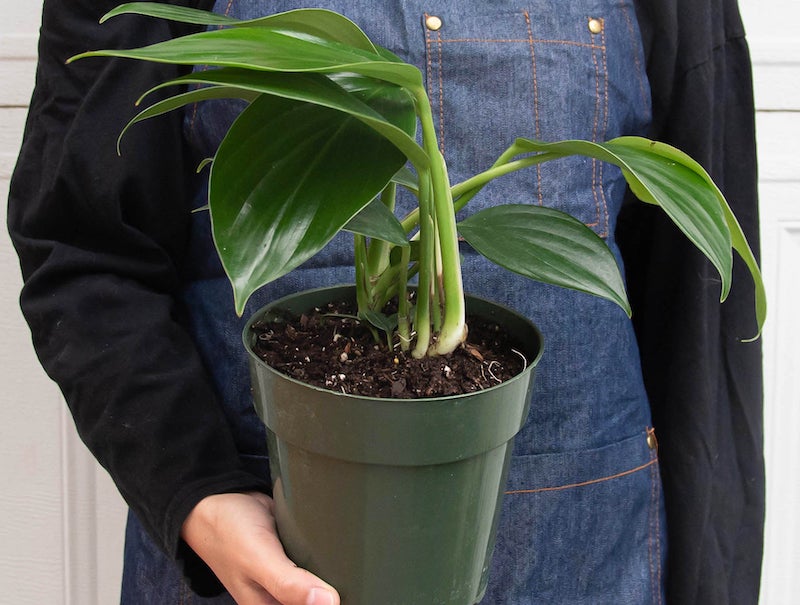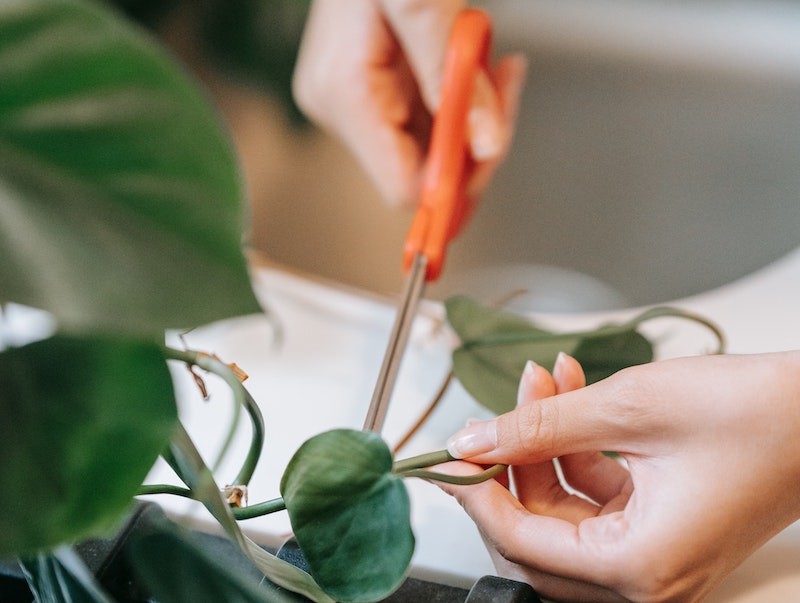Philodendrons have been a favorite houseplant for many years. This large family of plants contains over 450 different varieties, all with beautifully unique foliage. They make excellent houseplants for many reasons. One of which is that they readily root in water, making them easy to propagate. It is easy to quickly multiply your plant collection this way! This article will outline a few alternative ways to propagate philodendrons, and how to help your cuttings thrive.

Methods To Propagate Philodendron
Typically, the best propagation method for philodendrons is by stem cuttings. Look for a strong, healthy area where you can snip off a few inches of the plant at the node. Nodes will be areas between the leaves, typically on a bump with little roots already trying to grow out. Your cutting should be about 4-6 inches long. Use clean shears and snip just below a node. Remove the bottom leaves so they don’t rot in the water or potting medium, and make sure the nodes are fully submerged.

Best Rooting Media To Propagate Philodendron
Your philodendron cuttings will root in regular clean water, but also in soil. Use a clean jar or container and fill it with clean water. Fully submerge the nodes and wait a few weeks before roots appear.
To root your philodendron in soil, use a potting mix that is lightweight with excellent drainage. You can make propagation medium by mixing extra perlite and/or orchid bark in regular potting soil, in equal parts. Alternatively, you can use a seed starting mix that comes from garden centers, e.g. Espoma Organic Seed Starter Premium Potting Soil Mix. Place the mix into a container that can be covered with a clear bag, like a seed starting tray.
A product called rooting hormone can help your cuttings grow roots more quickly. Just dab the end of the cutting in the rooting hormone powder before burying it in the soil.
Steps To Propagate Philodendron
Step 1 - Look for a healthy 4-6-inch stem section where you can take a cutting below the node.
Step 2 - To avoid rot, trim off the bottom few leaves, leaving about three for photosynthesis.
Step 3 - Place the cutting in either a clean jar of water, or pop it in some soil.
Step 4 - For soil propagation you may want to use rooting hormone on the end of cutting.
Step 5 - Plant your cutting in a rooting medium.
Step 6 - Keep the cutting moist. Provide plenty of light and warmth; use artificial grow lighting and grow mats to help cuttings thrive.
Caring For Philodendron Cuttings
Provide your cuttings with at least 4 to 6 hours of indirect sunlight daily. Once a day you should dump out the water in your jar of cuttings. Or, if they’re in soil, keep them moist by misting with a spray bottle filled with water. The soil should be kept moist but not wet. To reduce the chance of any fungal infections, occasionally prop open the lid of your greenhouse or plastic bag to provide airflow. Once they have rooted, it can be a good idea to feed your cuttings with a light dose of fertilizer. Use a houseplant fertilizer at half the label strength to avoid fertilizer burn.
Transplanting Philodendron Cuttings
Philodendron cuttings are ready to pot once the roots emerge from the drainage holes of the nursery containers. Select a new pot that is only one size larger than the philodendron’s nursery pot in order to avoid disease or fungal issues. Overly large containers may retain too much moisture for too long, causing root rot. Use high-quality potting soil that is light, nutrient rich and has great drainage. For the most part, philodendrons grow well in a general-purpose potting soil, such as Miracle-Gro Tropical Potting Mix.
 |
Author Chris Link - Published 3-23-2023 |
